Whether you have them in your garden or love a winter woodland walk, these are some winter berries that you might spot through the colder months. Not only do they look great, but they are helpful to wildlife and can be used in our homes too.
Euonymus europaeas (spindle)
The vibrant pink fruits split to reveal bright orange seeds for a bright and vivid appearance in winter. They’re found in woodland and hedges from September onwards when birds, mice and foxes can enjoy the berries. However, it’s best that we leave wildlife to enjoy the berries because the leaves and fruit are toxic to humans.
- Interesting foliage, flowers in spring and fruit in autumn
- Fully hardy
- Grows up to 4m tall
- Moist but well-drained or well-drained soil
- Full sun or partial shade
- Exposed or sheltered
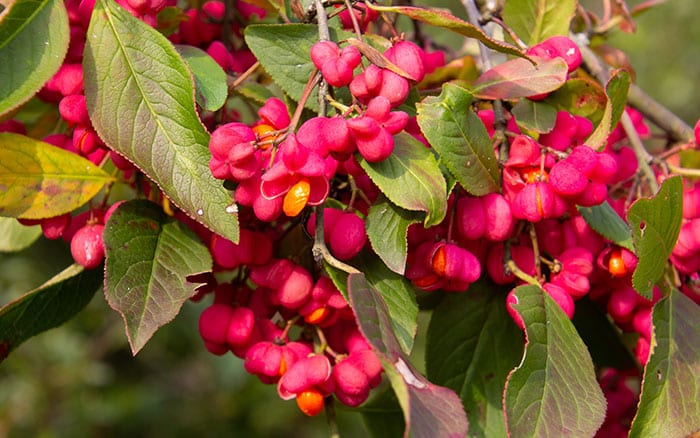
Crataegus monogyna (hawthorn)
The glossy leaves are joined by cream flowers in spring that are popular with pollinators. Then, the deep red fruits, known as haws, follow in autumn. Migrating birds like redwings, fieldfares and blackbirds eat the fruit that are high in antioxidants. In our own homes, the haws can be used to make jellies and wines.
- Flowers in spring and fruits in autumn
- Fully hardy
- Grows up to 8m tall
- Moist but well-drained or well-drained soil
- Full sun or partial shade
- Exposed or sheltered
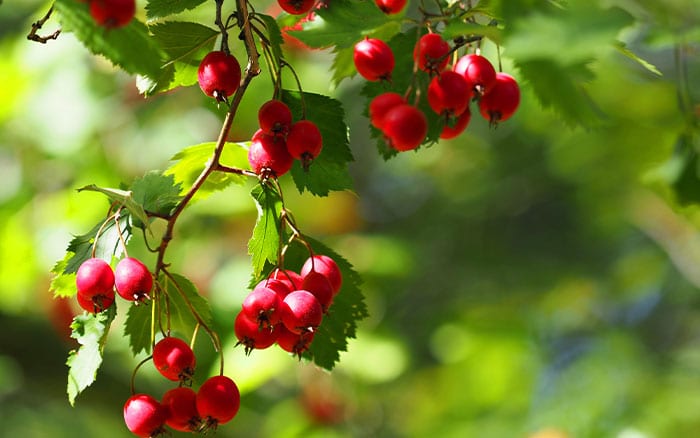
Prunus spinosa (blackthorn)
Another great plant for wildlife, this small tree has small white flowers in spring that are frequently visited by pollinators. Then, come autumn, the blue-black fruits known as sloes grow which are enjoyed by larger birds such as thrushes. We can use them to make wines and preserves, but they’re most commonly used to flavour gin.
- Flowers in spring and fruits in autumn
- Fully hardy
- Grows up to 4m tall
- Moist but well-drained soil
- Full sun
- Exposed or sheltered
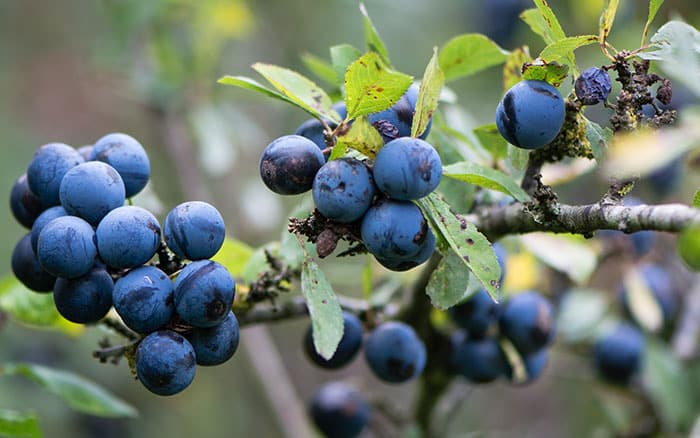
Sorbus aucuparia (rowan)
Next is this rowan that has small orange-red berries from August to January where they prove popular for many types of birds. Redwings, song thrush, blackcaps and waxwings are just some of the birds that appreciate these berries. They are safe for people to eat too and are high in vitamin C, however they do have a sour taste.
- Flowers in spring and fruits in autumn
- Fully hardy
- Can grow higher than 12m tall
- Well-drained soil
- Full sun or partial shade
- Exposed or sheltered
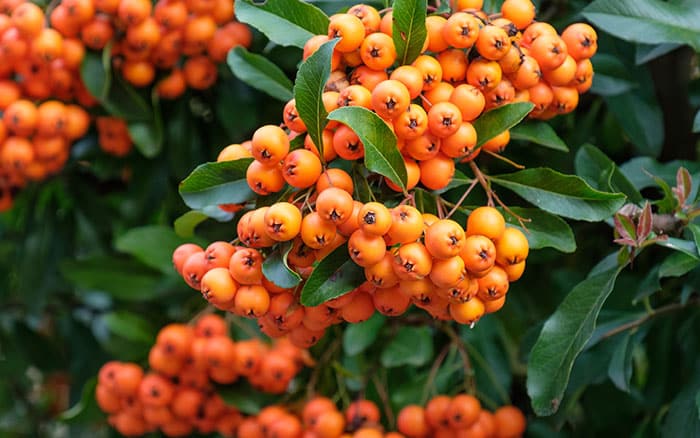
Juniperus communis (juniper)
The evergreen foliage of juniper varies from bushy growth to columnar, upright habit, with fragranced needle-like leaves. In autumn, the purple-black berries are borne on the plant, with fieldfares, song thrush and ring ouzel snacking on them. As well as this, the fruits are good for flavouring gin and sauces.
- Evergreen foliage and fruits in autumn
- Fully hardy
- Can grow up to 8m tall
- Moist but well-drained or well-drained soil
- Full sun or partial shade
- Exposed or sheltered
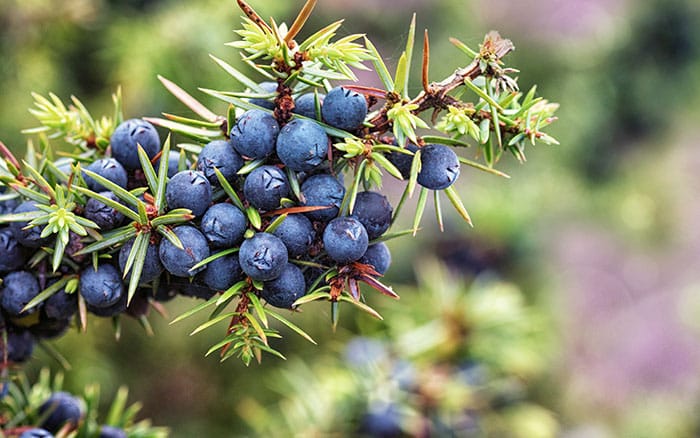
Rosa canina (dog rose)
In spring, thus deciduous shrub blooms with pale pink flowers in small clusters that bees and butterflies like to visit. From September to December, there are orange-red hips, a great source of food for blackbirds, waxwings and redwings. In addition, they can be used in our own kitchens to make syrups.
- Flowers in summer and fruits in autumn
- Fully hardy
- Grows up to 4m tall
- Moist but well-drained soil
- Full sun
- Exposed or sheltered
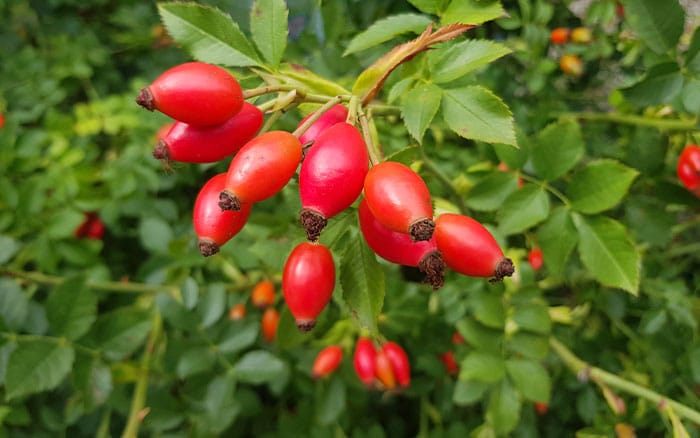
Callicarpa bodinieri var. giraldii (beautyberry) ‘Profusion’
With an upright habit growing up to 3m tall, the leaves turn pinkish-purple in autumn before clusters of purple fruits grow on the smooth stems. Known for attracting birds, they are a wonderful architectural addition to a shrub border.
- Flowers in summer and fruits in autumn
- Fully hardy
- Grows up to 4m tall
- Well-drained soil
- Full sun or partial shade
- Exposed or sheltered
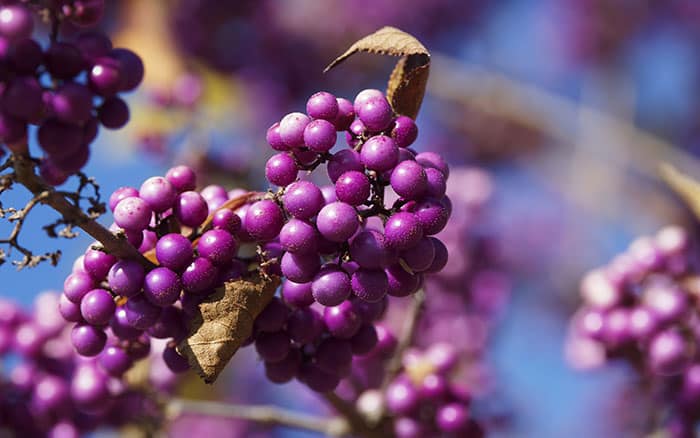
Cotoneaster horizontalis (wall cotoneaster)
Growing up to 1m, this spreading dwarf shrub has small glossy leaves that turn fiery orange in autumn. They are a great addition for the garden for late colour with the red berries that are eaten by birds. Well-suited to a wildlife garden, the flowers are popular with bees and other pollinators.
- Flowers in spring and fruits in autumn
- Fully hardy
- Grows up to 1m tall
- Well-drained soil
- Full sun
- Exposed or sheltered
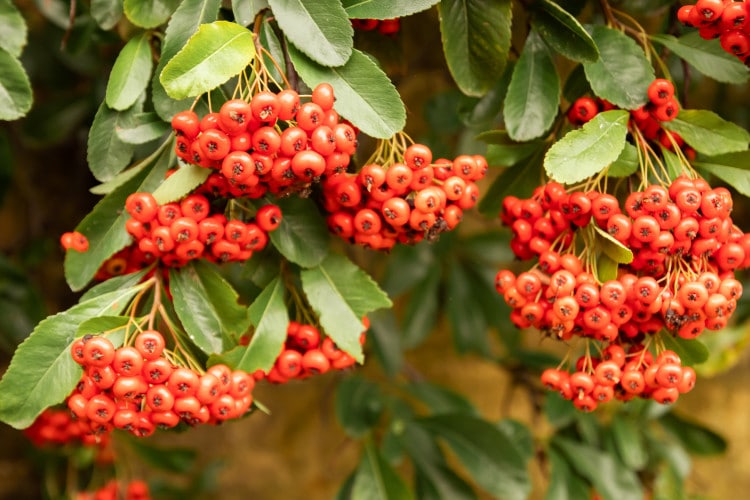
So, if you’re looking to bring more interest to your garden at the end of the year with winter berries, these shrubs and trees are a great start. As well as many of them being useful in the kitchen, they’re so helpful to wildlife which is important through winter.
David Domoney is a Chartered Horticulturalist, Broadcaster, and Author. David has worked with a number of the UK’s leading garden retailers as a plant buyer and strategic consultant. With more than 30 years experience, in horticulture, David is as passionate about plants now as he was when he bought his first plant at a village fete.




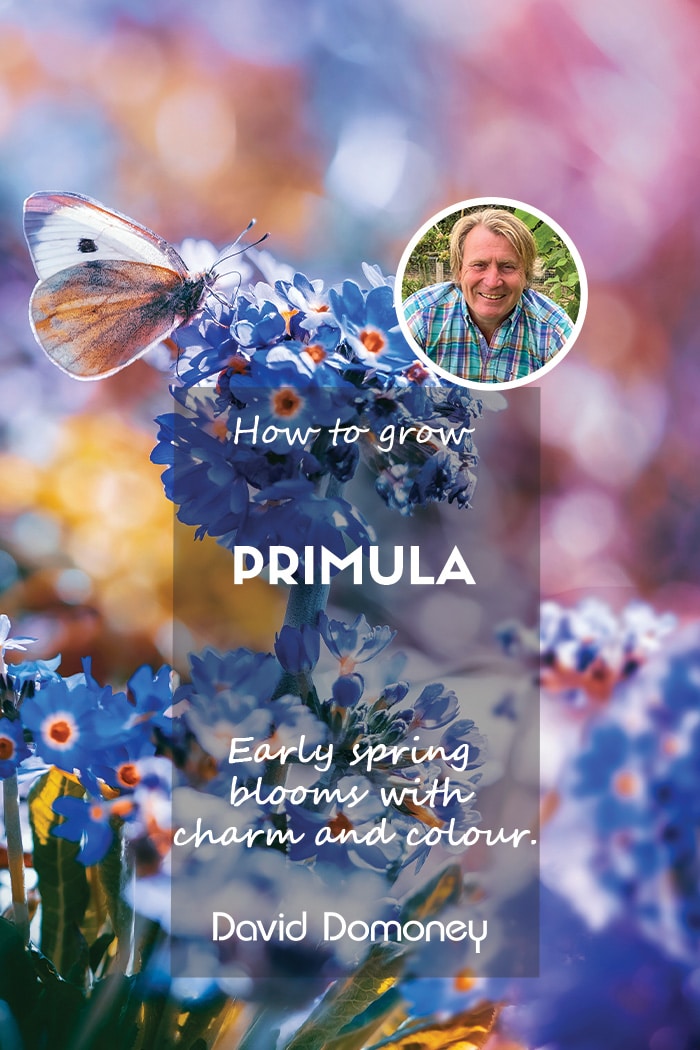


this is all interesting, i have a few of these berry bush/trees in my garden- i am looking for information on Myrtle, would love to hear of uses etc